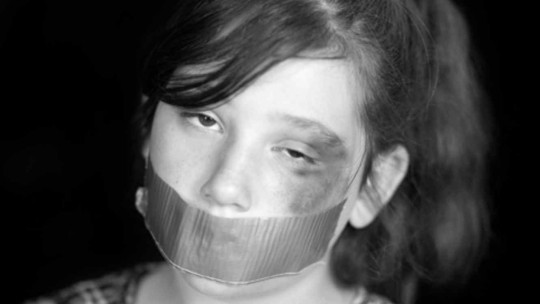
Even today, it is relatively common for us to hear in the news about cases of mistreatment and gender or intimate partner violence, abuse of minors or different types of aggression against some type of individual.
Terms such as abuse and mistreatment often appear, which are generally used synonymously However, these two concepts, although they are indeed related, do not imply exactly the same thing.
In this article we aim to establish some of the main differences between abuse and mistreatment.
Defining both concepts
To understand the possible differences between the terms mistreatment and abuse, it is first necessary to understand what they correspond to or how they are defined.
Definition of abuse
We understand abuse as any act carried out by one person towards another in which violence is used or that aims to cause harm to the abused subject. The objective of causing harm can be highly variable. It can be physical, mental, sexual, patrimonial…
And not only is the performance of acts considered abuse, but also their omission as long as it causes harm to the abused person. It is possible that in some cases the abuse is not voluntary (for example, someone’s needs can be ignored, causing them harm without necessarily having the intention to cause them). Although power relations may mediate, it does not have to imply a situation of inequality between both parties from which one of them takes advantage, in which case we would be talking about abuse.
Definition of abuse
When it comes to abuse, when we use this word we are referring to the existence of an overlimitation with respect to something or someone, taking advantage of the subject who carries it out of a specific element, attribute or situation that it possesses or has been given to perform an act or achieve something that does not correspond to it.
It assumes the existence of an unequal relationship. In the interpersonal field, abuse towards a person involves using or causing harm to them by some means, generally using some type of physical, psychological, sexual, socio-economic or vicarious violence.
Main differences between abuse and mistreatment
Although they are often used synonymously, the concepts of abuse and mistreatment have a series of differences that make them slightly different concepts. Below we explain some of the main differences between the two.
1. Level of specificity
The term abuse includes, as we have seen, any harmful act voluntarily caused to a person, being or property by a subject. This would also include abuse as a type of mistreatment in which there is inequality between the abuser and the abused.
2. Power relationship
One of the main differences between mistreatment and abuse is that although both terms refer to the presence of some type of violence or harm caused to someone or something, the concept of abuse includes the notion that there is an element that causes There is a relationship of inequality between both subjects.
The element in question can be very variable, from aspects such as physical strength, age and experience, class or social position, position in the power hierarchy or simply the capacity for manipulation or coercion to the existence of an emotional bond between both. The abusive party takes advantage of said inequality to harm the abused party
3. Intentionality
Generally in situations of mistreatment and abuse we can find that the aggressor intends to harm the attacked party. However, there are some types of abuse in which this is not necessary, such as due to ignorance of the needs of the affected party (as occurs with some animal abuse) or due to carelessness.
Although sometimes it is possible that someone is abusing without knowing it (for example, because of their power, another person does something for them even though it was not the subject’s intention to take advantage of their position), It is much more common for abuse to be completely conscious and voluntary
4. Common use of the term
It is common that when we talk about abuse, the first thing we think of is the existence of sexual violence This is because in order to perpetrate this type of abuse, the person who abuses uses, for his own benefit and at the expense of the other, his greater physical strength, age, power, the existence of an emotional bond, of emotions such as fear or fear or simply of surprise to dominate the affected party and commit the act. Examples of this can be found in cases of rape, sexual harassment or child sexual abuse. It is also frequently used to talk about abuses of authority.
On the other hand, when talking about abuse or ill-treatment, reference is usually made to the existence of physical and psychological violence, in which beatings, insults and humiliation appear.
Despite this, it must be taken into account that at this point we are talking about the usual use given to the terms, while abuse is still a type of mistreatment.








